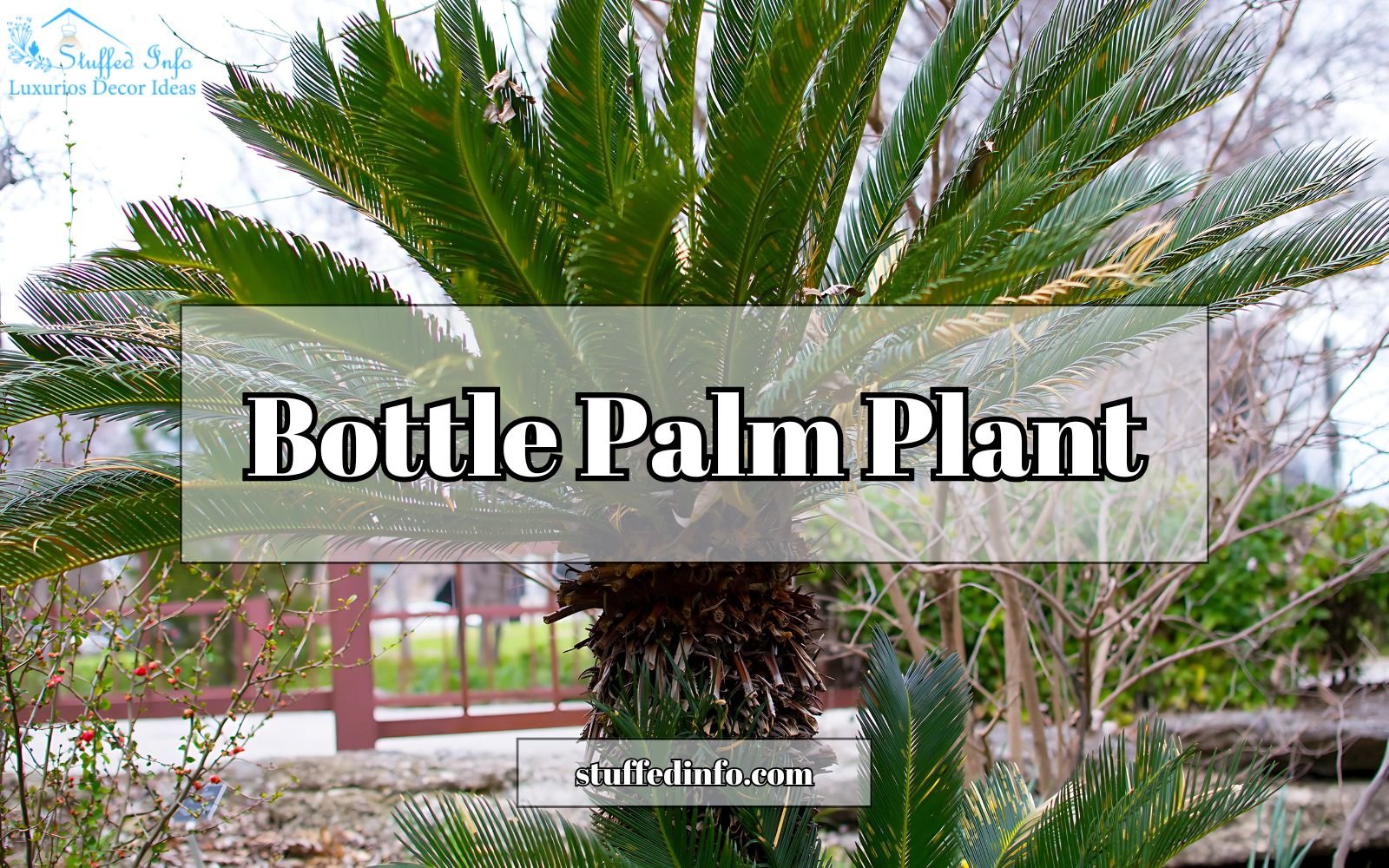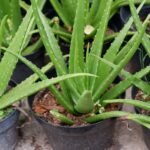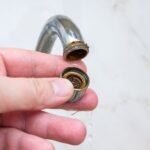The bottle palm plant, which scientists call Hyophorbe lagenicaulis, is an eye-catching addition to any indoor or outdoor space. It’s got a cool look with that bulging trunk and elegant fronds, making it a hit with plant lovers. Plus, the love for Bottle Palms is on the rise because they’re super versatile, especially as gorgeous potted palm trees outside. Still, this awesome tropical plant has its own special needs when it comes to light, temperature, soil, and fertilizer to stay healthy and thrive. In this post, we’ll explore everything you need to know about taking care of the Bottle Palm so you can enjoy this charming plant in your home.
Table of Contents
ToggleOverview of Bottle Palm Plant
The bottle palm tree is hard to miss because of its unique look. It has long, fancy leaves and a striking reddish crownshaft. People usually plant it as a standalone tree, but you might also see some with multiple trunks that really spice up the scenery. Here’s all the info for you before you start planting it.
Which Areas Does Bottle Palm Plant Grow?
Bottle Palm Plant loves warm weather and does really well in places like South Florida, thriving in tropical or coastal areas. Just keep in mind that they don’t like the cold, so you should keep them safe from frost and freezing temps. For the purpose, you must tie up the fronds and throw on some frost cloth.
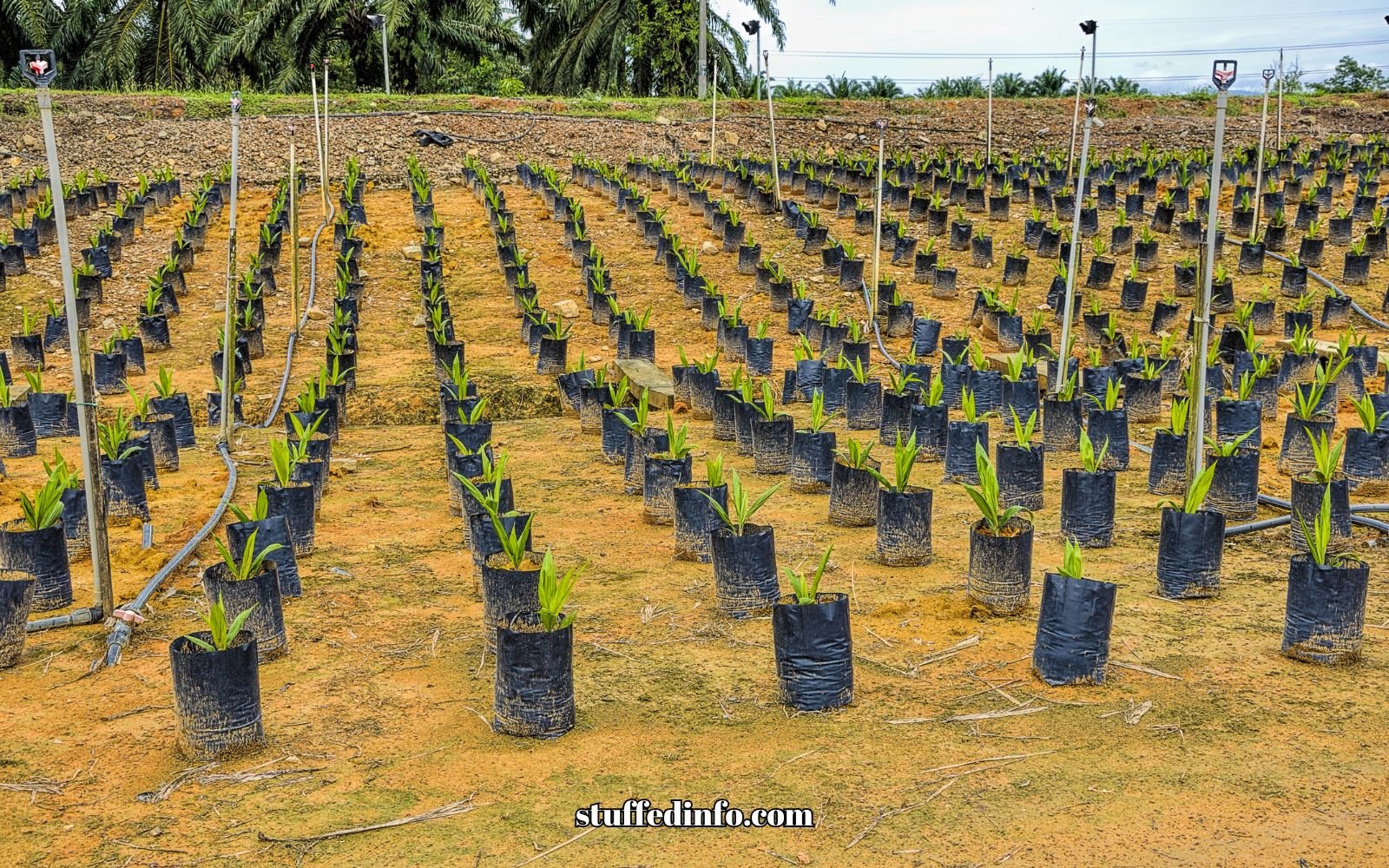
What Is Ideal temperature for Bottle Palm Plant?
Check out the perfect temperature for your Bottle Palm to grow strong and healthy:
| Condition | Temperature | Notes |
| Optimal Temperature Range | 70-85°F (21-29°C) | Promotes healthy growth and development |
| Minimum Temperature | Above 50°F (10°C) | Bottle Palms are not frost-tolerant |
| Maximum Temperature | Up to 95°F (35°C) | However, tolerable with adequate water and humidity to prevent heat stress |
How Tall Can Bottle Palm Plants Grow?
Getting to know how bottle palms grow can help you decide on your space.
- Open Areas: These palm trees usually end up being about 10 to 12 feet (3 to 3.6 meters) tall when they’re fully grown.
- Potted Bottle Palm Plant: If you keep them in pots, they stay smaller, typically getting to about 4 to 6 feet (1.2 to 1.8 meters).
Therefore, their smaller size and cool trunk shape make them a favorite for both gardens and cozy indoor areas.
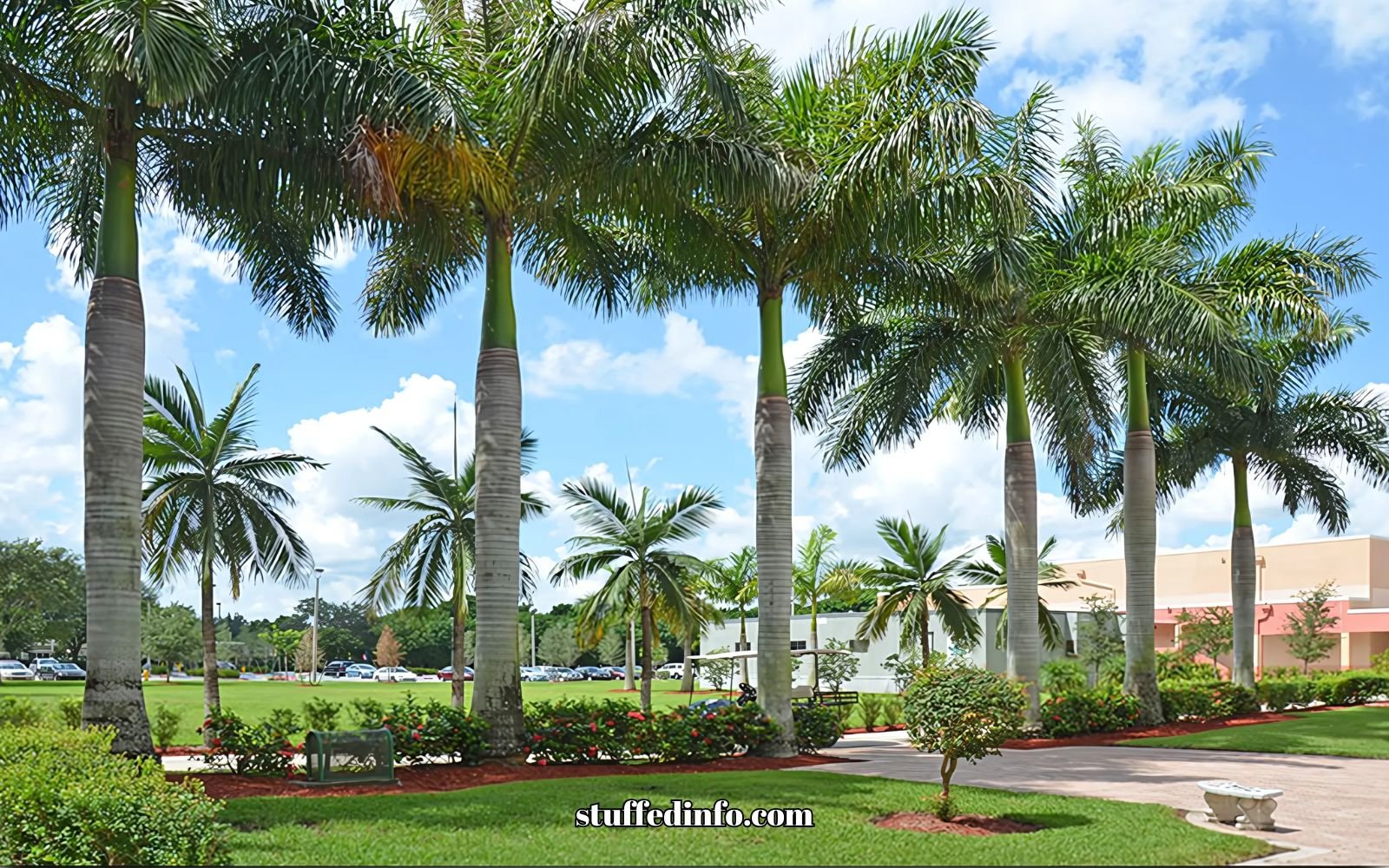
Do Bottle Palm Trees Do Well In Pots?
Yes, bottle palm trees can thrive in pots! Not only does this flexibility make them a great choice if you’re looking to add some tropical vibes to your home or patio, but it also offers versatility in placement. Here are some key tips for growing palm trees in pots outdoors:
- Pot Size: To begin with, pick a pot that fits the root system without being too big, so it doesn’t hold too much moisture. Good drainage is super important to avoid root rot.
- Soil: Next, go for a well-draining soil mix, ideally one that’s sandy or loamy, with a slightly acidic to neutral pH.
- Light: Moreover, set the pot somewhere that gets full sun to partial shade, making sure it gets at least 6 hours of direct sunlight every day.
- Temperature and Humidity: Bottle palms especially love temperatures between 70-80°F (21-27°C) and high humidity. A little misting can help keep the humidity up.
- Fertilization: For optimal growth, use a slow-release, palm-specific fertilizer 3-4 times a year.
- Indoor Care: If you’re growing it indoors, place the pot in a bright spot with indirect sunlight and rotate it regularly for even growth.
- Pruning: Finally, not much pruning is needed; just take off any dead or damaged fronds in late winter or early spring.
How Long Does a Bottle Palm Tree Live?
Bottle palms are pretty impressive because they can live a long time, usually between 50 and 70 years when they’re in the right environment. If you want your Bottle Palm to stick around and thrive, you gotta give it some good care, like enough sunlight, water, nutrients, soil quality, etc. Let’s have a look at caring bottle palm tree to help them last long.
4 Best Growing & Caring Conditions For Bottle Palm Tree
1. Sunlight Conditions
Making sure your bottle palm tree gets enough sunlight is super important for its health. So, How Much Light Does a Bottle Palm Need?. Well, this plant loves more than 6 hours of direct sunlight each day, but it can handle some shade when the sun’s blazing. But how to tell it’s not getting enough light?
- First and foremost, leaves will turn yellow
- Moreover, fronds will stretch out.
Pro Tip: If you spot these issues, you might want to move your plant to a brighter spot or use some artificial grow lights to help it out.
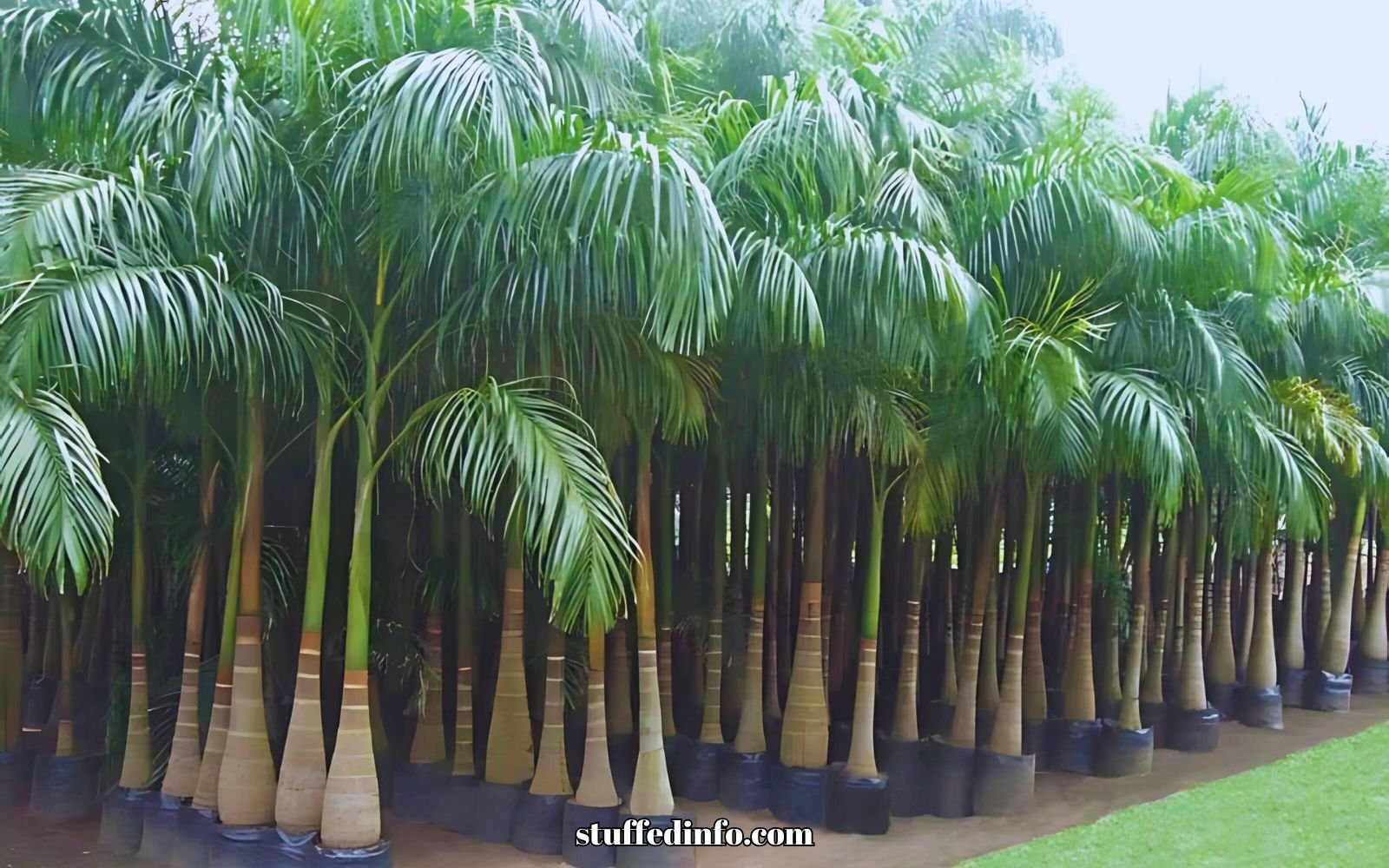
2. Water Requirements
If you’re a plant enthusiast, you might be wondering: How often should I water my Bottle Palm? It’s super important to find the right balance when watering so the soil stays moist but not too soggy. Here’s a straightforward guide to watering:
- During the Growing Season (Spring and Summer): Water roughly once a week, making sure the top 1-2 inches of soil is dry before giving it another drink.
- Resting Time (Fall and Winter): Cut back watering to every 2-3 weeks and aim to keep the soil a little moist.
Watering Needs of Potted Bottle Palm Plant
Got a potted bottle palm plant? You gotta be careful about how often you water it. Check out the table below to see the details!
| Pot Size | Water Needed (cups) | Frequency (days) |
| 2.5″ pot |
0.1 |
10 |
| 3.0″ pot |
0.2 |
10 |
| 4.5″ pot |
0.6 |
12 |
| 5.0″ pot |
0.8 |
12 |
| 6.5″ pot |
1.5 |
13 |
| 7.5″ pot |
1.8 |
14 |
| 10.0″ pot |
3.5 |
16 |
3. Fertilization and Soil Requirements
Bottle palm plant needs sandy-loamy soil mix with a pH of 6 to 7.5. Further, it’s best to grab a slow-release granular fertilizer that’s made just for palms. These fertilizers usually have a nice mix of essential nutrients like nitrogen, phosphorus, and potassium (N-P-K). Additionally, they have some micronutrients like magnesium, manganese, and iron, which are super important for keeping your palms healthy.
- Recommended Fertilizer Ratio (N-P-K Ratio): A typical ratio for palm fertilizers is 12-4-12 or 8-2-12.
- Number Of Times: You should apply the fertilizer about 3-4 times a year, usually during spring, summer, and early fall.
4. Spacing and Growing Requirements
When you’re figuring out how much room a bottle palm needs, keep in mind the following:
- Firstly, they can be planted 4 to 6 feet apart in groups.
- Secondly, if you’re planting a single one, make sure it’s at least 6 feet away from any buildings.
- Also, if you have a multi-trunk version, it’ll need extra space for its chunky bases.
- Pruning: Taking care of your Bottle Palm tree by pruning it is a smart move to keep it in good shape. It helps remove any dead or damaged fronds that might bring in pests or diseases. The good news is that this palm is super low-maintenance because it grows slowly, making the pruning process pretty simple.
- Boosts Trunk Growth: Getting rid of old or damaged leaves helps the tree focus its energy, making the trunk stronger..
- Best Time To Prune: Ideally, the best time to do it is in late winter or early spring, just before new growth kicks in.
- Propagation: Growing bottle palms takes a bit of patience but you can totally cultivate your own gorgeous palm trees. However, remember the following tips:
- Fresh Seeds: Grab some fresh seeds to get the best results because older seeds don’t sprout as well.
- Humidity: Keep things nice and humid around the seedlings to help them grow strong and healthy.
Pro Tips: Slowly get the plant used to sun and wind, and keep an eye out for pests.
Wrapping Up
To wrap it up, the bottle palm tree is an awesome plant that can add a bit of that tropical vibe to any area, whether inside or outside. By giving it the right care, like keeping an eye on its light, watering, and soil needs, your Bottle Palm can stick around and thrive for a long time. Additionally, whether you decide to pot it or put it straight in your garden, its cool look and flexibility make it a great pick.
FAQ
1. What pests should I watch out for with my Bottle Palm Plant?
Common pests include spider mites and mealybugs. Regularly check the undersides of leaves and use insecticidal soap or neem oil if you notice any infestations.
2. How do I propagate a Bottle Palm Plant?
The best way to propagate a Bottle Palm is through seeds. Soak the seeds in water for 24 hours before planting them in a well-draining soil mix. Keep the soil moist until germination.
3. What are some common problems with Bottle Palm Plants?
Yellowing leaves can indicate overwatering or nutrient deficiencies. If the leaves are browning at the tips, it might be a sign of underwatering or low humidity.


